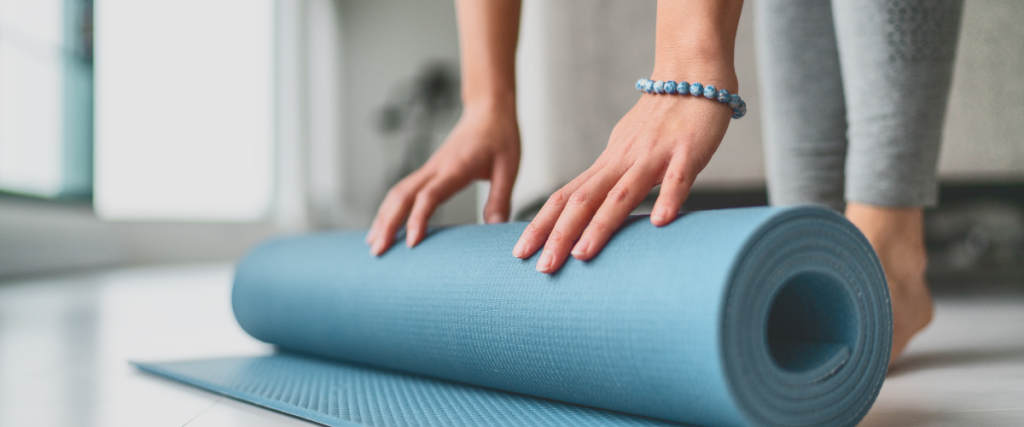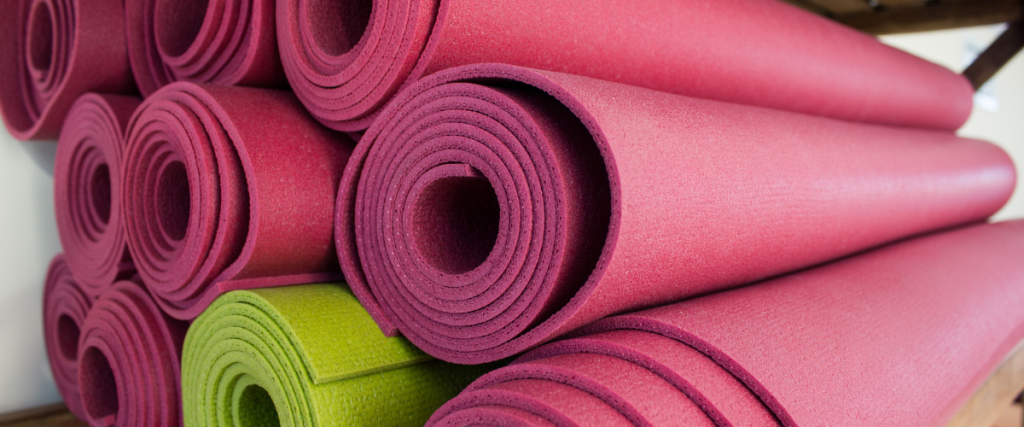
When practising yoga, your mat is your ever-dependable partner and the most essential accessory you will need. In principle, a yoga mat may last for 6 to 12 months, or even up to a couple of years. But its longevity depends on how and how often you use your mat.
Though you want to fully utilise your mat, milking all the usage you can get, you will find telltale signs alerting you to have it replaced even before it fully breaks down.
Still can’t decide if you need to grab a new mat? Here are 5 tips to find if it’s time to change your yoga mat.
☑ Your mat has become thinner and uneven in some areas.
Mats come in different thicknesses, depending on the type of yoga you are practising. Standard thickness is about 3 millimetres, going up to 4 to 8 millimetres if you prefer something more cushiony. Your sensitivities and injuries may also be a factor; like if you need to provide additional padding for your knees.
The situation: After much use, your mat naturally wears out. Some areas are not as thick or padded as when you first bought your mat. It can be evident in spots that are more used than others, for example, hand, feet or weight imprints where you usually step or sit.
Why is this a problem? An uneven or thinned mat can compromise your balance while doing yoga poses. It might also cause joint pains or injuries as the mat’s support and cushioning capacity are decreased. Also, your focus will be affected during your workout as you suddenly feel the change in the padding you are stepping on.
☑ Your mat is slippery.
When you first buy your mat, it has a certain level of stickiness on both sides. This provides traction and support so your hands and feet will not slip and the mat itself will not skid on the floor while doing the poses.

The situation: Your hands or feet are not gripping the mat well. You find yourself doing extra steps or measures to have a firmer grasp, or worse, you are actually slipping while doing the triangle or the downward dog.
Why is this a problem? Slipping while on your mat during a yoga session is never an acceptable scenario. It is extremely dangerous and with a high risk of injuries for you or even to someone nearby.
☑ Your mat now has bald spots, tears or holes.
The situation: You see specific spots on your mat that seem to have been rubbed off or are more slippery than other areas. These are patches you use more frequently, like the corners for your hands and the middle spot where you usually stand or sit.
You can also spot little holes, rips or tears around the mat. These punctures are probably due to the rolling and unrolling of the mat, coming into contact with sharp objects, or because of vigorous movements while on the mat.
Why is this a problem? You might think these are just tiny rips and it shouldn’t really matter much. But over time, the holes or tears can get worse and cause the mat to split totally! You can get caught in this tear or get off-balanced. Now that is an accident waiting to happen!
☑ Your mat has a weird smell.
It’s normal (though, of course, not ideal) that new yoga mats do exude some rubbery, fishy or chemical smell. This naturally occurs in mats that are made from rubber, jute, cork, bamboo or plastic materials. It should come off in time, after a good cleaning and being aired out.
The situation: You notice a not-so-nice odour coming from your mat, even if you religiously clean, disinfect and air it out after every use. Sweat accumulates on the mat, especially after strenuous yoga sessions, and you might have rolled your mat immediately not giving the mat some time to breathe.
Why is this a problem? Letting moisture, like sweat, be absorbed by your mat and not cleaning it regularly is just like having a breeding ground for germs, bacteria and fungi. It may cause serious skin reactions or allergies as you constantly have physical contact on your mat. Also, who would want to have some funky smell emanating from your mat during a yoga class?
Here’s another scenario. You just bought your mat, and the chemical or rubber smell is too strong, even sometime after you opened it and aired it out. The smell will be too distracting and might even cause headaches in the long run after too much exposure. You might need to look for another yoga mat made from a more wholesome material
☑ Your mat is shedding.
The situation: The mat has begun to shed or pill. You find little bits and pieces of your mat on the floor or wherever you put it down.
Why is it a problem? It is the most obvious sign that your mat is probably on its last legs. No one likes leaving a mess behind, especially when you do it at someone else’s yoga studio or even at your own home. It’s an additional task, having to always clean after your mat. It’s just a matter of time before it will break apart and it might pose risks and injuries, compromising your balance and lack of support and cushion, or a child or your pet may accidentally intake the particles.
Final Thoughts
One might think, why all this fuss over a mere yoga mat?
It would be good to look back at your purpose and why you bought a yoga mat. You wanted something to support your body as you do yoga poses. It will keep you safe, cushioning you from the hard floor and preventing you from slipping.
So letting your mat deteriorate while still using it will grow to be a dire concern in the long run and may affect your safety, security and hygiene!
